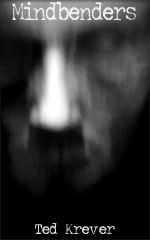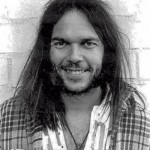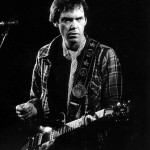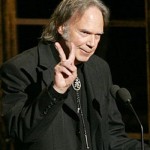The Gospel of Neil (Part One)
Just to get business out of the way first:
 The 99 cent sale on my thriller ‘Mindbenders’ is going on for ONE MORE WEEK!
The 99 cent sale on my thriller ‘Mindbenders’ is going on for ONE MORE WEEK!
F. Paul Wilson, author of the Keep (NY Times bestseller!) and the Repairman Jack novels, says “Don’t miss Mindbenders!”
Tom Monteleone, author of Blood of the Lamb (NY Times bestseller!) says “A dead-on thriller for the decade . . . . I can’t imagine anyone reading this and not wanting more.”
So how come you’re still missing out? At 99 cents?
More details here.
Okay, end of commercial. On to Neil:
You can’t judge a creative person by worldly success. It’s not that we’re not in favor of it; everyone wants to pay their bills and have a bit left over at the end of the month. My personal dream is to be able someday to take my special girl (this is part of the specialness of the dream—finding the girl who can put up with me) to the airport, scan the departures and say, “Let’s take THAT one.”
But I digress…
Neil Young is my patron saint. Not of music, but of creativity and managing your creativity. I’ve probably learned more from him than all other sources combined. And I’m offering these lessons as suggestions to you all, even though I’m (so far) not on the NY Times bestseller list.
Because living a creative life is its own reward.
1) Focus on the Core
 ‘Neil writes like three songs a day—every day,” David Crosby said, shaking his head in 1974. While other artists got sidetracked into being performers or guitar heroes, fashion statements or political lightning rods, Neil kept writing songs. He focused on songs from the beginning as the central job—the part that had an independent life, that would live on separate from and after him—and has approached songwriting throughout his career as a job, therapy and an outlet.
‘Neil writes like three songs a day—every day,” David Crosby said, shaking his head in 1974. While other artists got sidetracked into being performers or guitar heroes, fashion statements or political lightning rods, Neil kept writing songs. He focused on songs from the beginning as the central job—the part that had an independent life, that would live on separate from and after him—and has approached songwriting throughout his career as a job, therapy and an outlet.
2) Your Job As an Outlet
How cool is that? Work hard but let it all hang out. Control, discipline and abandon. Not an easy mixture. It has to come from deep passion. You have to really care and really remember that you’re really not that important, all at once. If you can put all that together, you should come up with something fairly unique in this world.
3) Release the Clinkers
Paul Strand, the legendary photographer, was once asked how you become a great photographer. He answered, “Only show them your good pictures.” Most creative people choose that approach.
 Not Neil. For every ‘Tell Me Why’ and ‘Down By the River’, there’s also a ‘T-Bone’ ( ten minutes with Crazy Horse singing ‘Got Mashed Potatoes-Aint’ Got No T-Bone.’ Those are the entire lyrics to the song—listen here if you dare).
Not Neil. For every ‘Tell Me Why’ and ‘Down By the River’, there’s also a ‘T-Bone’ ( ten minutes with Crazy Horse singing ‘Got Mashed Potatoes-Aint’ Got No T-Bone.’ Those are the entire lyrics to the song—listen here if you dare).
Everybody’s got clinkers but Neil puts his out. This was real important to me at an early stage because it was part of the abandon I needed. I am by nature shy and introverted. I had to move past my native caution, first in stories and then eventually in life, sort of (I’ve settled for a generalized social backwardness—it’s my style).
I consider ‘A Crafty and Devious God’ one of my clinkers. But it’s out there. It’s my first novel—it’s how I got here.
When you abandon something that was the focus of your passion, even for a short while, it’s like being afraid of your past. The thing becomes a weight in the back of your mind. Better to let it loose, let it find its own life. And ‘Crafty God’ is one of my friend Barry’s favorites of my books, so maybe I’m wrong about it. I wrote it but that doesn’t mean I have the clearest view—in fact, it could very easily mean the opposite.
4) Don’t worry about Polish—Go for the Feel
Nicolette Larson was a lovely talented singer and a good soul. She and Neil were together for maybe his most beautiful album ‘Comes a Time’ and a few subsequent tours. She said he would drive her crazy at playback sessions because he would say ‘Here’s the track that you did with that great harmony line—and here’s one where we sound really good together—but here’s the one we’re putting out, because the FEEL is right.’
Sometimes it’s hard to listen to Neil and believe that anyone actually worked hard to have songs sound like that. It’s much easier to believe that the take was just thrown together on the fly. And Neil is notorious for things like telling Linda Ronstadt (and Nicolette) that they were rehearsing a song and afterward, when Linda said “Okay, when do we go for the take?”, saying “Oh we got it—that was it.”
But Neil is a notorious control freak, as creators tend to be. He told Kenny Buttrey, a fabled drummer who played on ‘Harvest’, “No left hand” (I can’t find the quote, I think it was the left). Meaning, no fills. Just the basic beat. And held him to it in concert. So the loose and the restrictive work hand in hand but what you’re going for is a feeling of spontaneity, which is not necessarily the same thing as the reality.
So my thriller ‘Mindbenders’ (not comparing myself to Neil—just talking creative process) went through the normal four or five drafts any book gets. But when I got to the end, where I would normally do just a polish, putting some wax on the paint and Armorall on the tires, I wrote the whole thing over, start to finish, from scratch, from memory. I think I lifted a grand total of twenty pages out of previous drafts.
Because now that I knew what the story was about, I wanted to see it all again in my head. I wanted to play it back and write it all at once, so it would read spontaneous. It might not be as perfect—but it would feel more real. All art is illusion—but if it feels real, you can arouse a real emotional reaction from the reader, which is the only justification for making a fuss over this stuff.
5) Don’t Be Afraid to Leave Things Behind
 Crosby Stills Nash and Young were the biggest band in the world, in 1970 and again when they reunited in 1974. They were supposed to do an album after the mammoth tour of the US and Wembley in England. If the album had been bad, it would have made each of them millions. But the tour featured a lounge with bowls of cocaine, hookers on the payroll and very few new songs by the others. Neil traveled on a separate bus , premiered something like eight or nine songs on the tour; the other guys had one or two apiece, maybe. When they went into the studio, Stills and Nash had an argument over a harmony note—one note. Neil said, “See you guys tomorrow.” He came back twenty-eight years later. On his terms.
Crosby Stills Nash and Young were the biggest band in the world, in 1970 and again when they reunited in 1974. They were supposed to do an album after the mammoth tour of the US and Wembley in England. If the album had been bad, it would have made each of them millions. But the tour featured a lounge with bowls of cocaine, hookers on the payroll and very few new songs by the others. Neil traveled on a separate bus , premiered something like eight or nine songs on the tour; the other guys had one or two apiece, maybe. When they went into the studio, Stills and Nash had an argument over a harmony note—one note. Neil said, “See you guys tomorrow.” He came back twenty-eight years later. On his terms.
He left Stills in the middle of a tour in 1976 (the Stills-Young Band). The bus driver was coming to a crossroads and Neil said “Which way is the next gig?” The driver said “Right” and Neil said “Turn left.” He sent Stills a telegram saying, “Funny how things that start out spontaneously sometimes end that way. Eat a Peach. Neil”
Which leads to:
6) Just Keep Going
Good times, bad times, good songs, bad songs, breakups with girlfriends, two sons (from different mothers) with MS, being sued by his own record company—Neil kept writing and performing live.
 When he was told he had a brain aneurysm in 2005 and that it needed to be operated on in a week, his immediate response was ‘Can I fly? Is that a problem?’ The doctor said ‘Sure you can fly-it might kill you but it’s not a problem.’ Neil thought that was a funny line. He flew to Nashville, wrote and cut most of an album ‘Prairie Wind.’ And was back in New York the next week for the operation. The album’s about mortality—who’d’a thought?
When he was told he had a brain aneurysm in 2005 and that it needed to be operated on in a week, his immediate response was ‘Can I fly? Is that a problem?’ The doctor said ‘Sure you can fly-it might kill you but it’s not a problem.’ Neil thought that was a funny line. He flew to Nashville, wrote and cut most of an album ‘Prairie Wind.’ And was back in New York the next week for the operation. The album’s about mortality—who’d’a thought?
I worked on a show called ‘Day One with Forrest Sawyer’ at ABC News a long time ago. We worked for six months preparing before we hit air the first time and the show’s producers kept relentlessly editing the same pieces over and over. Why not give these a rest? Build a bank of good stories? No, these are our first—they have to be PERFECT! Once we finally hit air, we went through the bank in a month and then we were cutting pieces in two weeks—and they were better, crisper, more to the point.
That experience confirmed another lesson I learned from Neil, from that period where he was throwing off songs like playing cards—if you stop thinking so much, you do not just more work but better work. So I’ve spent years trying to think less and do more. Let it come from the subconscious. Understand it’s all there already, all you have to do is liberate what’s inside.
All art is liberation. That’s why it’s personal and universal—because we all need to liberate ourselves. That’s the journey.
7) Oh yeah – one more quick one:
Guy in the audience: “They all sound the same!”
Neil: “It’s all one song!”
Indeed.
There’s more, believe it or not, some of it makes even less sense than this. But this is enough for now. Eat a peach.
And Happy Canada day.

